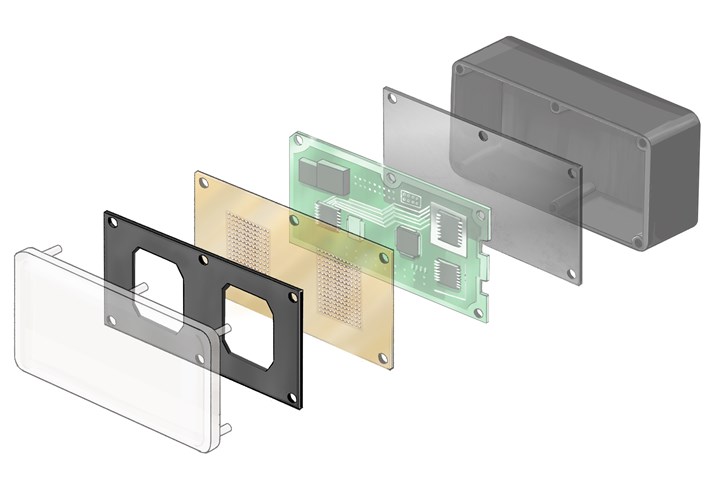PBT-Based Compounds for Automotive Radar Sensors
SABIC expands radar absorbing LNP Stat-Kon portfolio of specialty compounds.
Two radar absorbing PBT-based compounds have been added to the LNP Stat-Kon line for automotive radar sensors by SABIC, Houston, significantly enhancing this portfolio of specialty compounds.
The new grades may be used for integration with radomes manufactured using PBT, which reportedly can provide superior resistance to automotive chemicals. They complement and extend SABIC’s existing radar absorbing LNP Stat-Kon compounds, which are based on PEI for withstanding higher processing temperatures or on PC for general applications that require high durability and a balance of physical properties.
The high radio frequency (RF) absorption of the PBT-based compounds can help increase detection range and improve signal resolution. Through materials innovation, SABIC is contributing to the growth of automotive radar and the design of next-generation sensors.

Radar sensors are widely used in advanced driver assistance systems (ADAS), where they provide capabilities such as blind spot detection, collision avoidance, automatic braking and traffic alerts. Radar absorbing materials (RAM) are used to shield the field of radar wave transmission and attenuate side waves that can cause ghost images or trigger false actions or alarms. A broader choice of radar absorbing LNP Stat-Kon compounds can help manufacturers to increase flexibility in sensor positioning and function and to help design sensors that can be optimized for vehicle size and other variables, according to SABIC..
Said SABIC’s LNP product manager Jeff Xu, “Radar sensors are a critical component of the ADAS suite, in part because they can operate in conditions such as poor visibility that impair LiDAR (light detection and ranging) and camera functioning. To support technology advancement in the rapidly growing radar sensor market, SABIC continues to develop specialty materials that can enhance sensor accuracy and reliability. Our growing portfolio of LNP compounds offers high absorption of radar waves as well as potential cost benefits compared to radar absorbing materials designed for military applications.”
According to San Francisco-based Grand View Research, Inc., the automotive radar market is forecasted to reach $12.16 billion USD by 2025, growing at a CAGR of 20.8%. This rapid expansion can be attributed to increased investments in the automotive industry, higher vehicle sales, greater emphasis on safety and innovations in radar technologies. Novel materials are contributing to this growth trajectory by improving sensor performance. SABIC’s new PBT-based LNP STAT-KON compounds deliver an RF absorption of 67 percent at 77GHz, which could allow for increased ADAS functionality for the automobile. To keep pace with rapid advancements in radar sensors, SABIC is developing additional grades that are either based on new resins or have higher radar absorbing properties.
Related Content
-
Lanxess and DSM Engineering Materials Venture Launched as ‘Envalior’
This new global engineering materials contender combines Lanxess’ high-performance materials business with DSM’s engineering materials business.
-
Prices Up for All Volume Resins
First quarter was ending up with upward pricing, primarily due to higher feedstock costs and not supply/demand fundamentals.
-
NPE2024 Materials: Spotlight on Sustainability with Performance
Across the show, sustainability ruled in new materials technology, from polyolefins and engineering resins to biobased materials.















